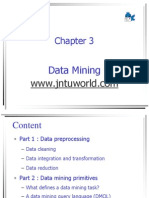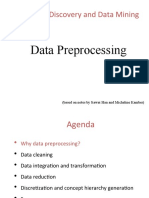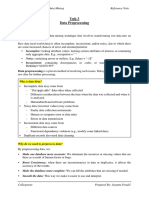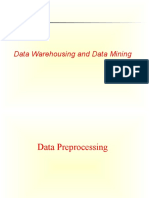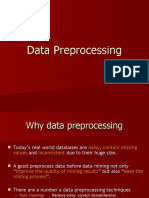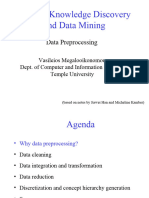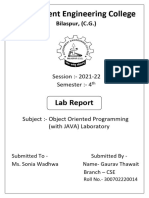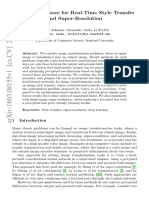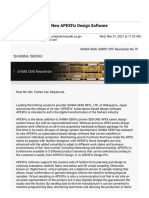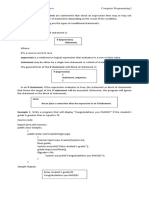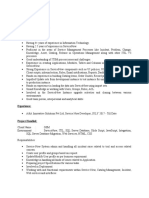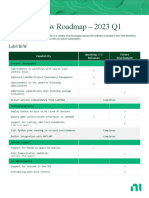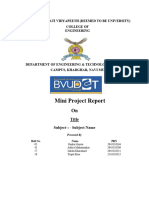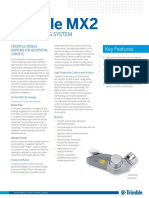0% found this document useful (0 votes)
117 views67 pagesWeek 4 - 5 - Data Preprocessing
This document discusses data preprocessing techniques for data mining. It covers 4 major tasks in data preprocessing: data cleaning, data integration, data transformation, and data reduction. Data cleaning involves tasks like filling in missing data, identifying outliers, and resolving inconsistencies. Data integration combines data from multiple sources. Data transformation techniques include normalization, aggregation, generalization and discretization. Data reduction obtains a reduced representation of the data volume.
Uploaded by
Hussain ASLCopyright
© © All Rights Reserved
We take content rights seriously. If you suspect this is your content, claim it here.
Available Formats
Download as PPTX, PDF, TXT or read online on Scribd
0% found this document useful (0 votes)
117 views67 pagesWeek 4 - 5 - Data Preprocessing
This document discusses data preprocessing techniques for data mining. It covers 4 major tasks in data preprocessing: data cleaning, data integration, data transformation, and data reduction. Data cleaning involves tasks like filling in missing data, identifying outliers, and resolving inconsistencies. Data integration combines data from multiple sources. Data transformation techniques include normalization, aggregation, generalization and discretization. Data reduction obtains a reduced representation of the data volume.
Uploaded by
Hussain ASLCopyright
© © All Rights Reserved
We take content rights seriously. If you suspect this is your content, claim it here.
Available Formats
Download as PPTX, PDF, TXT or read online on Scribd
/ 67
